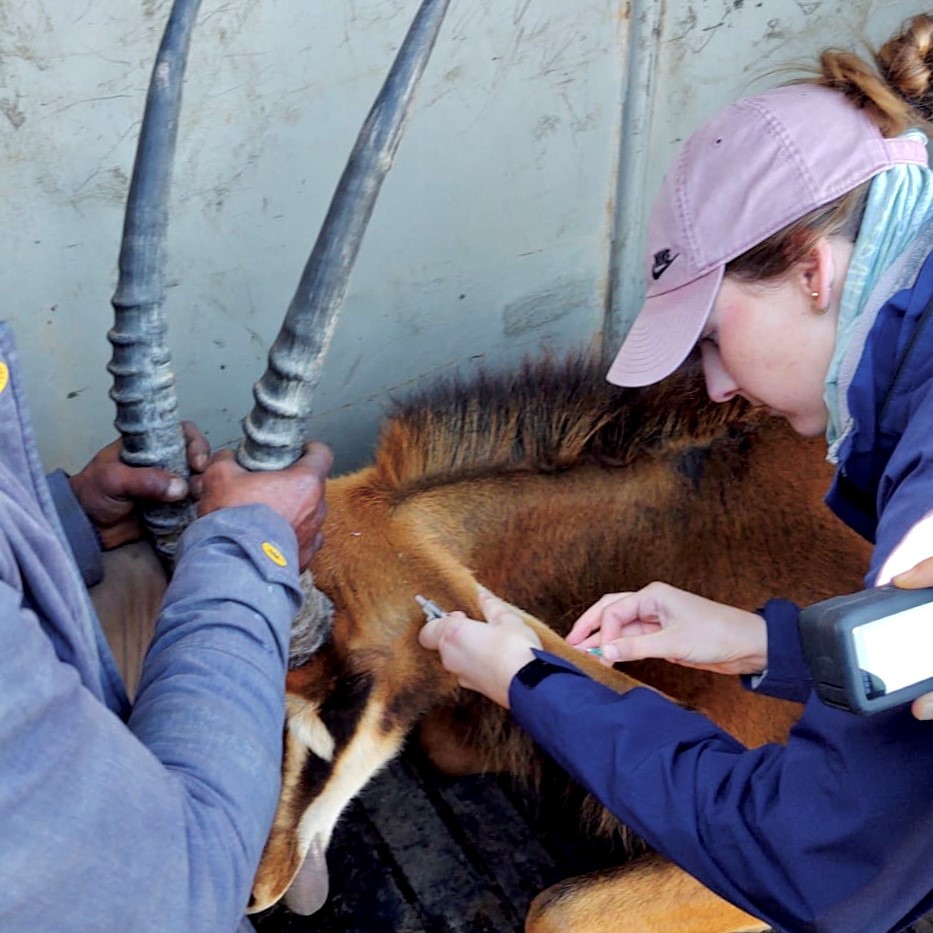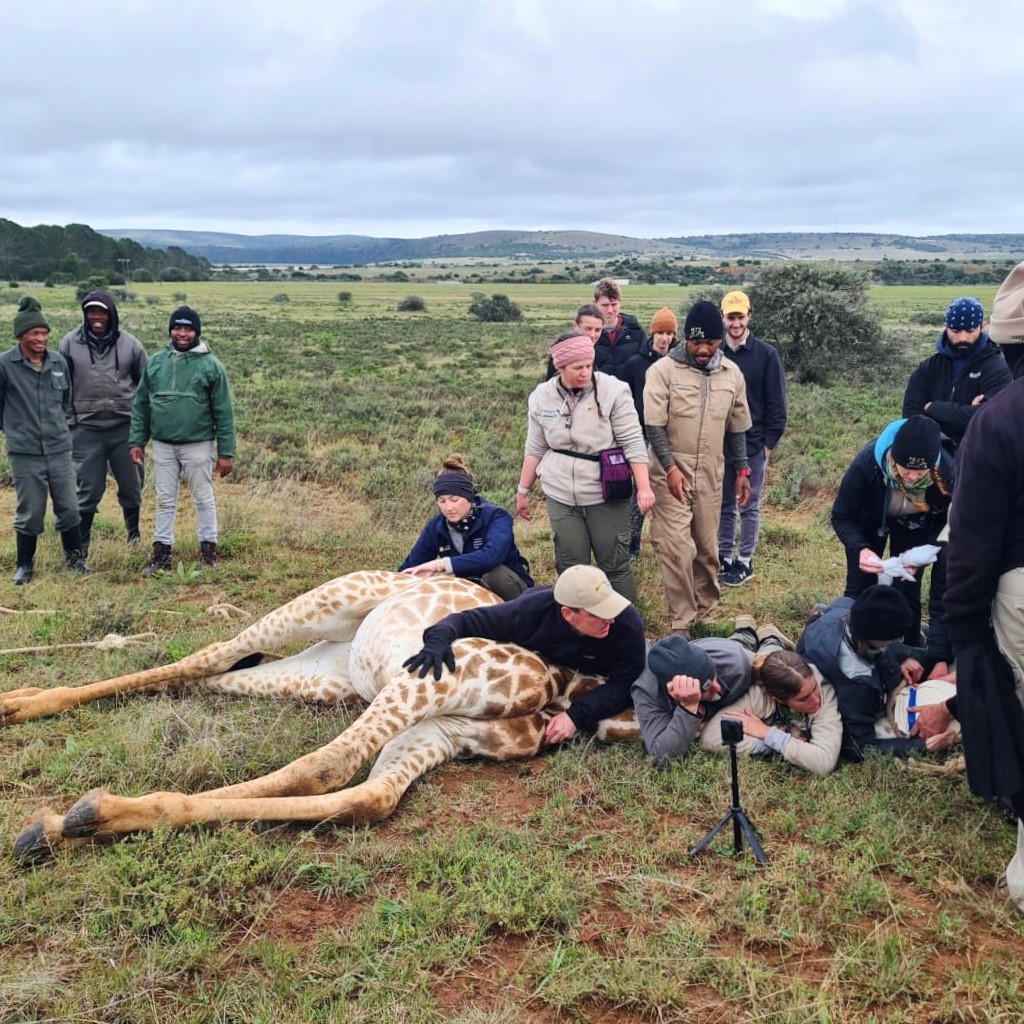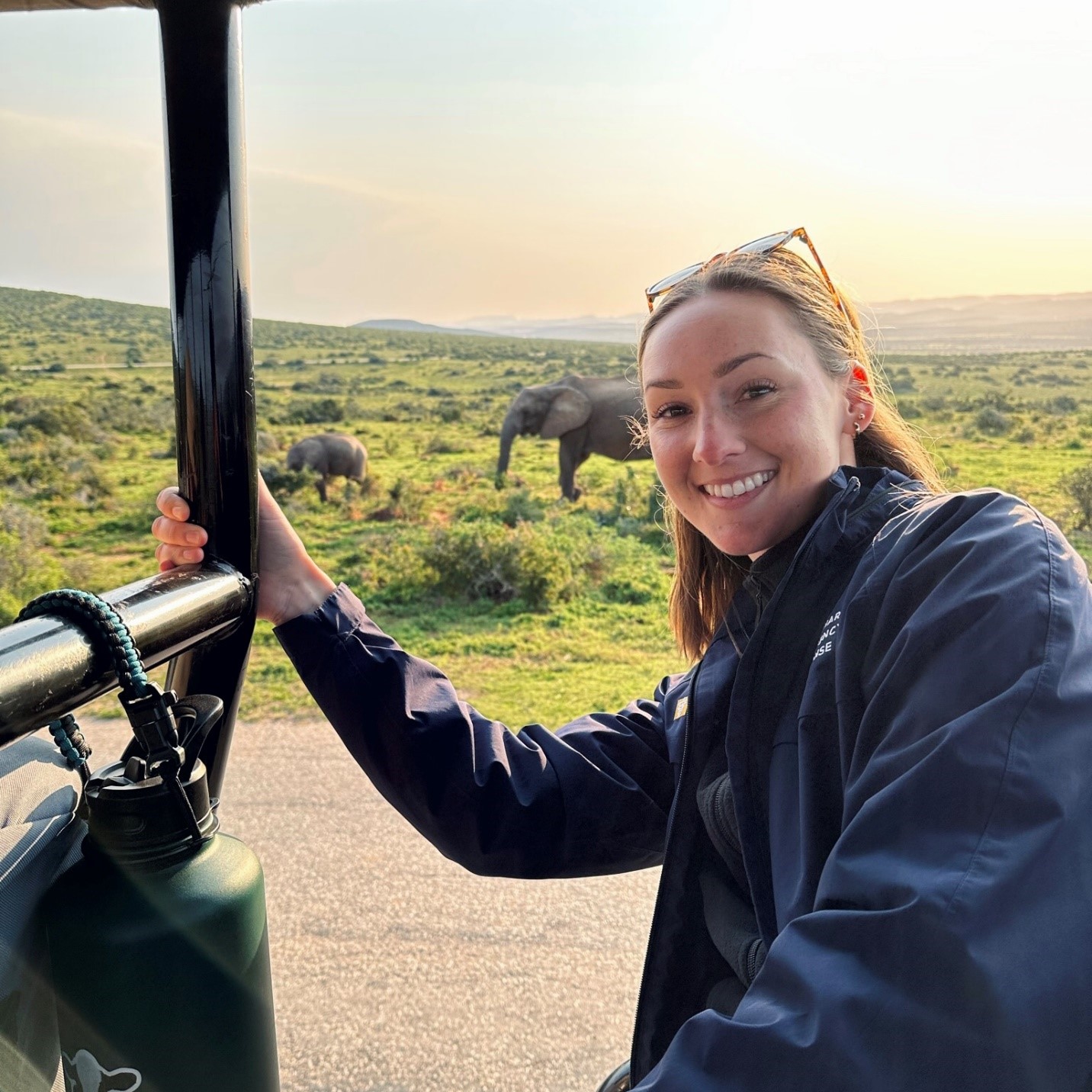Chelsea Morrow
I was fortunate enough to join a handful of veterinary students from the US and UK on a wildlife immobilization course in South Africa, “Vets Go Wild,” as one of my clinical year externships. The course is led by Dr. William Fowlds, a well known wildlife veterinarian in South Africa whose career ventures far and wide outside of veterinary medicine alone. He and his team work overtime in small animal medicine, wildlife medicine, wildlife and land management and conservation, socio-economic and cultural research, local and global public outreach, One Health, surveillance, law enforcement, education, and ecotourism. Because of this, my experience in this course taught me so much more than immobilization alone.
Arriving to the Leewenbosch Country House on Amakahla Game Reserve, where we’d lodge for the entirety of the course, was the first of countless breathtaking moments over the next 16 days. The staff was extremely welcoming and accommodating, including catering to everyone with dietary restrictions and making each meal as special as the last. As a refreshing change of pace from home, everyone who works at Amakhala (and even everyone we went to work for) is your friend and will join you in the fun, whatever the fun may be. I felt that this working relationship was integral to the success of the more serious tasks we took on.


As for the serious tasks, our job as students was to learn the ins and outs of immobilization, transport, and management of South Africa’s big game species under the umbrella of One Health and the current political and social climate. For 14 full working days, we played an active (and often primary) role in building anesthetic plans, managing and monitoring field anesthesia, and relocating big game. I directly assisted with impala, giraffe, zebra, rhino, red hartebeest, golden wildebeest, Cape buffalo, sable, oryx, and more. I performed intramuscular, subcutaneous, and intravenous injections (sometimes on a moving truck – hello hand-eye coordination!) and practiced the principles of anesthetic management in the field across species. I developed a more acute sense of anesthetic depth and safety around dangerous animals. I also was able to revisit a lot of pharmacology and how it relates clinically to the success of an immobilization.
Overall, the Vets Go Wild course was 16 days of long hours, good sleep, amazing food, special connections, rich education, unforgettable experiences and pure fun. I learned an incredible amount about wildlife, people, politics, medicine, and even myself. I couldn’t be more thankful for this experience and for everyone who helped make it happen!

